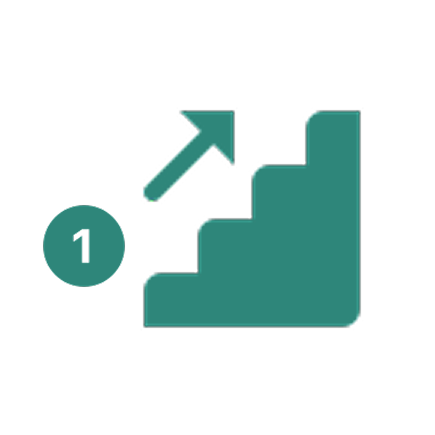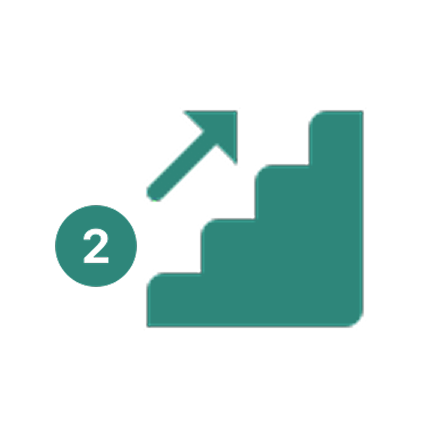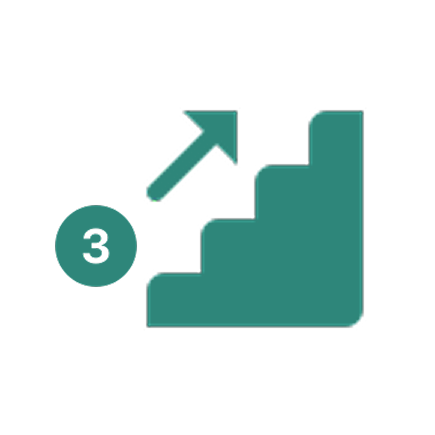Solution Focused Therapy Training
Curious about Solution Focused Practice?

Solution Focused Practice is a future-oriented, competency-based approach, with a solid evidence-based practice, with a robust body of research. It has roots at the Mental Research Institute in Palo Alto, California and in social constructivism, with strong links to neuroscience.
With a deep connection and influence from the brilliant psychiatrist, Milton Erickson, it was developed by Steve de Shazer, Insoo Kim Berg and their colleagues at the Brief Family Therapy Center in Milwaukee, Wisconsin. They spent more than 25 years observing hundreds of hours of sessions and preserved what supported desired client change and discarded what didn’t, carefully paying attention to the questions, behaviors, and emotions that helped clients form realistic, achievable, real-life solutions.
SFBT highlights the client’s capabilities and helps them adopt an alternative perspective on their future to build a more realistic and optimistic perspective and help them be aware of their successes, both past and present. It is a pragmatic approach, and draws from what has worked and is working in a person’s life and build’s on these successes to co-create small steps that the client is invested in doing. This model of counseling and consultation began in the therapy room and has been successfully expanded to many other settings. such as education, hospitals. prisons, government policy, corporate setting, social services and many more.
The Solution Focused approach is a highly effective model in therapy, education, coaching, consultancy and organizational development.

Level 1: Solution
Focused Practitioner

Level 2: Advanced Solution
Focused Practitioner

Level 3: Master Solution
Focused Practitioner (MSFP)
2025 Solution Focused Brief Therapy Training

The Academy of Solution Focused Training is a Founding Member of the International Alliance of Solution-Focused Teaching Institutes (IASTI). In the interest of providing quality training and establishing gold-standard industry practices, IASTI was formed by established institutes teaching and promoting Solution Focused Practice.
IASTI certification includes training, supervision and passing an Assessment.
The following information is from the website of IASTI, go to their website for more information: www.iasti.org
General information about the training
Each level of certification follows training in the solution-focused model as originally developed at Brief Family Therapy Center (BFTC) by Steve de Shazer, Insoo Kim Berg (De Shazer, 1988, 1991, 1994; de Shazer and Berg, 1992) and the team.
BFTC developed the solution-focused brief therapy model (SFBT) influenced by the work of Milton Erickson and the MRI institute at Palo Alto. In addition to the model as it was described by Insoo and Steve, the IASTI training may also include later developments and descriptions of how the approach can be used in Solution-Focused practices in a variety of contexts and clients.
Training hours
Each level consists of 50 hours direct formal training and 100 hours personal professional activities.
- Direct formal training is the organized formal training that is being led by a teacher/trainer. It includes the trainer giving lectures describing the model, but also exercises targeting specific solution-focused techniques, the studying of videotaped sessions, watching live interviews with clients and other work on specific example cases.
- Personal professional activities are activities that you will be able to exercise in part during your normal working hours or even at home. Since the training and practice of the solution-focused model is meant to be done at least in part within the context of trainees’ every day professional activities, you do not necessarily need to allocate exclusive time for all required hours toward certification.
- Examples of these training activities include: Using solution-focused techniques in sessions and evaluating the result, reading assigned solution-focused texts, peer supervision, role plays, keeping a daily diary of observations about resources or other SFBT principles, using the Solution-Focused Micro tools of Michael Hjerth, or other solution-focused learning activities identified by an IASTI Institute.
The proportion between classroom and personal training activities is 1:2 at each level of certification. This reflects the shared view of IASTI Member Institutes that in order to be most successful, trainees need to practice the solution-focused model in their respective professional environments, and that trainees need to develop their skills in a variety of ways both within and outside of the training classroom.
- Hours of supervision of the trainee’s work are regarded by IASTI as an important part of training in the solution-focused model and these are to be included in the total of 150 hours training at each level of certification. Each institute will plan for the inclusion of supervision in their training program with regard to their training tradition and local context.
SF Video Series: Learning space with the Masters
Register for our upcoming training
SFBT – SF Video Series: Learning Space with the Masters | Live practice with Masters
What do our previous participants say?
Norirwansah Bin Ramli
Singapore Children’s Society
I would like to say that the six days spent have given me a wonderful insight into SFBT. I find the live demos, observational videos, and the examples of the variation of questions particularly useful in aiding me towards a better understanding of how SFBT is put into practice. Thank you for the guidance, the wisdom, and the sharing of knowledge.
Abigail Dui
Singapore Prison Service
Thank you for the 6 days of training! I’ve truly enjoyed learning and practicing solution talk. It has opened my eyes to new techniques and tools to add into my toolkit when working with clients. I like that it is such a strengths based approach which guides the practitioner to view the client as having the resources to be able to come up with their own solutions. I’m excited to use the techniques learnt with my clients.
Kathleen
MOE, School Counsellor
I took time to let all the info sink in and made my cheat sheet of questions and I tried it with my students on Friday. Wow! It was SO POWERFUL when we focus on strengths and solutions rather than the problems! I stopped taking the monkeys from my students and I can feel the difference in myself after the whole day – I didn’t feel as drained or as incompetent, even though I had to see three self-harm students in a row. By focusing on the solutions, what they have done, and what they want differently really helps bring the ownership of the situation back to the students! Thank you, Debbie, you’re really a great inspiration! I look forward to the next time I get to learn from you again!”
Joan Low
Senior School Counsellor, MOE, Yishun JC
Taking the SF training with the academy has definitely been one of the best decisions I’ve made in my professional and personal life. Not only has it given me the tools and confidence to practice as a SF therapist over the past many years, it has taught me a radically different way of looking at the difficulties I’ve faced in my own life. Debbie is truly an inspiring teacher, mentor and coach and I’d wholeheartedly recommend anyone to take SF training with Debbie.

